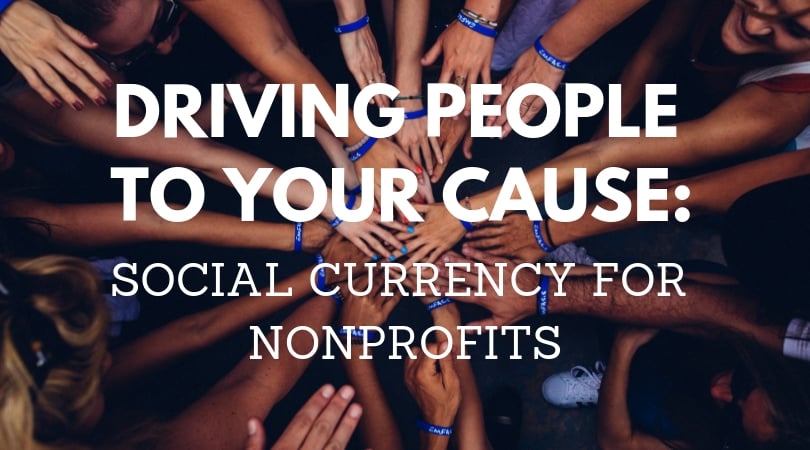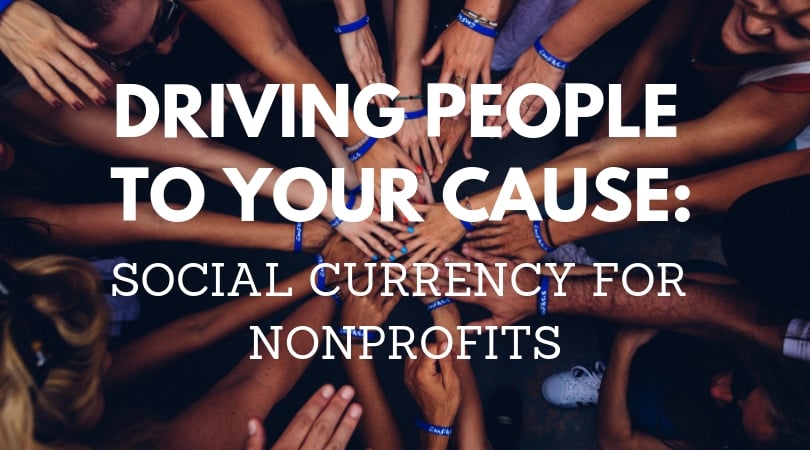How to Use Your Core Values to Inspire, Retain, and Energize Your Team
For the last few decades, but especially so in recent years, people are seeking out more than just an income from their place of employment. More...
4 min read
 Intern Blogger
:
5/9/19 11:42 AM
Intern Blogger
:
5/9/19 11:42 AM


You may think your local nonprofit cannot use flashy campaign tools to set your organization apart. You may think those tools are for businesses and big organizations and since you’re a small nonprofit, then these strategies either won’t work or aren’t appropriate for you. But social currency is an often-overlooked asset that can be powerful for small nonprofits.
So, exactly what is social currency? Social currency is defined as how much and how often, in their everyday life, people share information about a brand or organization. Social currency is what's behind the buzz around an organization, business and its products, what sets them apart and what keeps customers coming in. Put simply, creating social currency has become an important investment companies and organizations need to make to develop trust and loyalty with their customers.
But what does this mean for local nonprofits? The reality is nonprofits can leverage the trust they already enjoy with their communities, which gives them a leg up in social currency — you just need to learn how to use it.
In his book, Contagious, Jonah Berger lists three key parts to guaranteeing social currency:
The objective of this post is to help you see how social currency can work for your organization.
Remarkability is what will make your campaign or program stand out. We all know the Love Has No Labels campaign because the video went viral, but the actual event that the video captured was a great example of remarkability. You can see in the video that people were gathered to watch, and in almost all the shots, the audience was talking, pointing, laughing, and clapping, what they were seeing was remarkable and they had to talk about it.
The key to making something remarkable is to make your campaign around something interesting or surprising and the best way to do that is to give the audience something they won’t expect. The people at the event didn’t know what to expect from the X-ray panel and that’s what generated conversation and response.
The nonprofit Whole Whale wrote about becoming a Purple Cow (a term coined by marketing guru Seth Godin). This means finding a way to stand out among all the brown cows out there. Finding ways to make your message the one people read and talk about is one of the most important things when trying to get your audience to interact with your cause.
Something remarkable is worth talking about. Worth noticing. Exceptional. New. Interesting. It’s a Purple Cow. Boring stuff is invisible. It’s a brown cow. - Seth Godin
Game mechanics are the elements of a game, application, or program including rules and feedback loops, that make participating fun and compelling. In a traditional sense gamification tells players where they stand in the game. This is important because as humans, people tend to want to share about the awesome things they are doing in their life to their friends. Whether that’s how many sky miles they have on Delta or that they are an American Express gold member, people like to feel special and let others know that they are special.
Luckily for you and your organization, this will be easy because getting involved with a cause already makes people feel warm and fuzzy inside and they’ll want to share that feeling. What you want to do by adding game mechanics is to give them a reason to keep sharing how special they are for being a part of your organization.
The American Red Cross does this by allowing their volunteers who help with social engagement online to use the title ‘Digital Disaster Volunteer’ in their bios. This allows others to see that and ask questions about what a digital disaster volunteer is and leads them to the American Red Cross.
Patreon is another example of ways to leverage game mechanics. Patreon is a membership service for artists and creators to manage the content they are putting out; they have an option for creators to allow levels of membership that manages the content based on how much they pay. Donors or volunteers to your cause can receive rewards for doing a certain amount of work, which will give them placement and allow them to compare themselves to others and achieve more for themselves and ultimately your nonprofit.
In the nonprofit world, making anyone an insider doesn’t sound like something you’d want to do because your cause is about inclusivity and giving back to the world in one capacity or another. Well don’t worry, making some of your patrons insiders is not going to make you have to change your mission statement. It’s just going to give the people who are not part of your cause more of a reason to be. Making people feel like insiders requires two elements: Scarcity and exclusivity. This means making products or other things for your campaign exclusive or difficult to obtain; this generates desirability for your campaign.
The Girl Scouts do this by only selling cookies within a certain “season”. Museums do this by offering VIP members a “behind the scenes tour”. The same way game mechanics lets your volunteers share about the things they’re doing, making your volunteers feel like insiders generates conversation. Letting people get excited about the things they get from donating their time/money/energy into your organization happens more often if there’s certain time frames or restrictions to do it.
With these three key elements of social currency under your belt, your campaign can reach its full potential. Generating social currency is awesome for for-profit businesses to grow their brand but for nonprofits, generating word of mouth and creating conversation around campaigns is essential to building widespread support for addressing the world's issues and creating real change. Luckily for you, people are more likely to trust your organization because you’re promoting change for good. People are intuitive about gimmicks and that’s why certain well-financed plans to generate talk around for-profit businesses don’t always work well. By generating social currency authentically for your nonprofit, you are advancing your mission by giving people more of a reason to interact with a cause for social good.
Game Mechanics in Gamification- Business 2 Community
Non-Profits and the Knockout Punch of Remarkability
Viral Marketing for Nonprofits: Applying Jonah Berger’s 6 STEPPS
Viral Marketing for Nonprofits: 5 Ideas to Create Social Currency
------------
Cian Duffy is a third-year public communication major at the University of Vermont. She hopes to explore the world of publication, advertising, and strategic communication in the Pacific North West, after she graduates next year. Her love for skiing and all things outdoors drives her to find the perfect balance between work and play wherever she ends up.
The Change Conversations blog is where changemakers find inspiration and insights on the power of mission-driven communication to create the change you want to see.
© 2009- to present, Marketing Partners, Inc. Content on the Change Conversations blog is licensed under a Creative Commons Attribution-Noncommercial-NoDerivs 3.0 United States License to share as much as you like. Please attribute to Change Conversations and link to ChangeConversations.
Creative Commons License may not apply to images used within posts and pages on this website. See hover-over or links for attribution associated with each image and licensing information.

For the last few decades, but especially so in recent years, people are seeking out more than just an income from their place of employment. More...

You know nonprofit organizations need websites just as small businesses do, but you may be surprised to learn nonprofit sites can be more complex and...

In today’s rapidly evolving media landscape, understanding where and how your story is told isn’t just strategic—it’s essential. How you communicate...